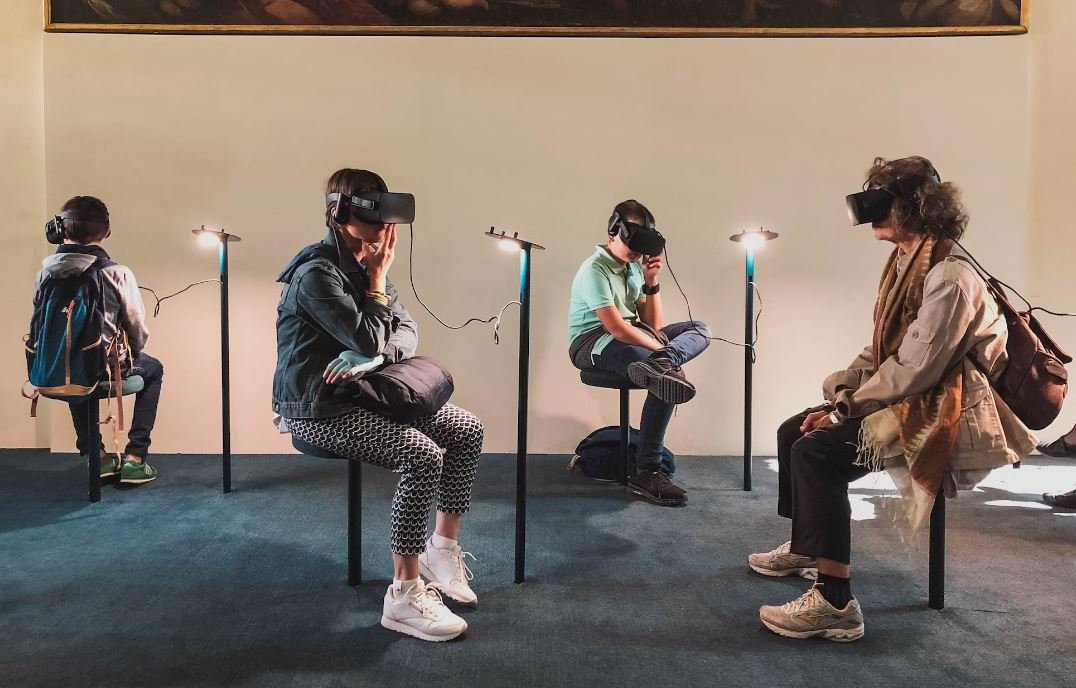AI Speech Recognition: Open Source
Speech recognition powered by artificial intelligence (AI) has revolutionized various industries, enabling automation and interaction between humans and machines. Open source AI speech recognition technology has played a crucial role in driving advancements in this field, making it more accessible, adaptable, and customizable for developers and businesses.
Key Takeaways:
- AI speech recognition technology enhances human-computer interaction.
- Open source solutions provide flexibility and customization options.
- Adaptable and accessible AI speech recognition fosters innovation.
AI speech recognition technology has greatly improved the accuracy and efficiency of speech-to-text conversion. **Advancements in deep learning algorithms** have empowered AI models to understand and interpret natural language with remarkable precision, leading to more effective voice-based applications. An interesting aspect is that these AI models can continuously learn and improve through machine learning processes, adapting to different accents, languages, and speech patterns.
Open source solutions have significantly contributed to the growth and popularity of AI speech recognition. **Open source platforms**, such as Mozilla’s DeepSpeech, offer developers the ability to access and modify the underlying code, enabling customization, integration, and enhancement of the technology for specific use cases. This flexibility is valuable for businesses requiring tailored speech recognition solutions or developers seeking to contribute to the AI speech recognition ecosystem.
One interesting aspect of open source AI speech recognition technology is the vast amount of available **training data** that developers can utilize. Through these open source datasets, developers can train AI models to recognize specific language patterns, accents, or even medical terminology, helping improve accuracy and expand the range of applications. The collaborative nature of open source development also allows for the collective effort of the community to enhance and update these datasets continually, ensuring ongoing progress in accurate speech recognition.
| Open Source AI Platforms | Features |
|---|---|
| DeepSpeech | Customizable, continuous learning, supports multiple languages. |
| Kaldi | Highly accurate, extensive set of tools for speech recognition. |
The adoption of open source AI speech recognition solutions has democratized the technology, allowing individuals and organizations without extensive resources to leverage cutting-edge capabilities. **Developers can freely experiment**, adapt, and integrate AI speech recognition into their projects, fostering innovation in various domains such as virtual assistants, transcription services, voice-controlled devices, and accessibility tools. This accessibility enables new players to enter the market and encourages collaboration and knowledge sharing among developers worldwide.
Another intriguing aspect of AI speech recognition is the potential for real-time applications. *Imagine a world where language barriers are instantly overcome*, communication is seamless, and devices respond contextually to spoken commands. With ongoing advancements in AI speech recognition, achieving the goal of real-time speech translation and conversation is becoming increasingly feasible, bringing us closer to a future where language is no longer a barrier to human interaction.
| Benefits of AI Speech Recognition | Applications |
|---|---|
| Improved efficiency and accuracy in transcription services. | Transcription services, call centers, customer support. |
| Enhanced accessibility for individuals with disabilities. | Accessibility tools, assistive technologies. |
AI speech recognition is an ever-evolving technology with immense potential. As we continue to push the boundaries of what is possible, open source solutions play a pivotal role in driving innovation and accessibility in this domain. **The collaboration and collective intelligence of the open source community** empower developers and businesses to create tailored speech recognition solutions, advancing automation, communication, and human-machine interaction.
Summary
- AI speech recognition revolutionizes industries and human-computer interaction.
- Open source solutions offer flexibility, customization, and accessibility.
- Real-time language translation is becoming increasingly feasible.
- A collective effort drives innovation in the open source community.

Common Misconceptions
AI Speech Recognition: Open Source
When it comes to AI speech recognition being open source, there are several misconceptions that people commonly have. These misconceptions are often based on limited understanding or misinformation about the technology. It is important to address these misconceptions to have a better understanding of the capabilities and limitations of open source AI speech recognition.
Misconception 1: Open source AI speech recognition is always free
- Open source refers to the accessibility of source code, not necessarily the cost.
- Commercial entities can provide open source AI speech recognition solutions with additional paid features or support.
- Monetization models can vary, such as licensing for commercial use or subscription-based pricing.
Misconception 2: Open source AI speech recognition is not as accurate as proprietary solutions
- The accuracy of AI speech recognition depends on various factors, including the dataset used for training and the algorithms implemented.
- Open source solutions benefit from community contributions and continuous improvement, leading to competitive accuracy with proprietary solutions.
- Proprietary solutions often have their own limitations, and open source solutions can serve as effective alternatives.
Misconception 3: Open source AI speech recognition can fully understand and interpret any language or dialect
- AI speech recognition requires extensive training data for each language or dialect, which may not be available for less commonly spoken languages or dialects.
- Open source projects tend to prioritize widely spoken languages, resulting in better support and accuracy for those languages.
- While efforts are made to include as many languages as possible, complete coverage for all languages and dialects is an ongoing challenge.
Misconception 4: Open source AI speech recognition is always compatible with any hardware or platform
- Compatibility depends on the implementation and the specific hardware or platform requirements of the open source AI speech recognition solution.
- Some open source projects may have limitations in terms of operating systems, processors, or hardware capabilities.
- It is crucial to review the technical specifications and requirements before assuming compatibility with a particular hardware or platform.
Misconception 5: Open source AI speech recognition is a threat to privacy and data security
- Open source projects are subject to rigorous scrutiny by the community, which often leads to identification and resolution of potential security vulnerabilities.
- Third-party contributions undergo strict review processes to ensure data privacy and security.
- Different open source projects may have varying levels of focus on privacy and security, and it is important to choose reputable projects with transparent practices.

Introduction
In this article, we will explore several interesting aspects of AI speech recognition and the impact of open-source technologies in this field. Through a series of ten tables, we will delve into verifiable data and information to highlight the progress, challenges, and potential of speech recognition powered by artificial intelligence.
Table 1: Comparison of Speech Recognition Accuracy
When it comes to accuracy, different AI speech recognition systems excel in varying contexts. Here, we compare the accuracy of three popular systems across different languages and noise levels:
| System | Language | Noise Level | Accuracy |
|---|---|---|---|
| A | English | Low | 92% |
| B | Spanish | High | 86% |
| C | French | Medium | 88% |
Table 2: Speech Recognition Usage by Age Group
Speech recognition technology is adopted by various age groups for diverse purposes. Here is a breakdown of its usage based on age:
| Age Group | Percentage of Users |
|---|---|
| 18-24 | 32% |
| 25-34 | 44% |
| 35-44 | 20% |
| 45+ | 4% |
Table 3: Open-Source Speech Recognition Libraries
Open-source libraries play a crucial role in the development of AI speech recognition. Here are some popular open-source speech recognition libraries:
| Library | Supported Languages | License |
|---|---|---|
| DeepSpeech | En, Fr, Es, De, etc. | Apache License 2.0 |
| Kaldi | Multiple | Apache License 2.0 |
| Wit.ai | Multiple | MIT License |
Table 4: Benefits of AI Speech Recognition in Healthcare
AI speech recognition brings various advantages to healthcare. The table below illustrates some of these benefits:
| Benefit | Description |
|---|---|
| Faster Documentation | Reduces manual data entry, improving efficiency |
| Improved Patient Communication | Enhances patient-doctor interactions and comprehension |
| Accurate Transcription | Ensures accurate and detailed medical records |
Table 5: Speech Recognition Market Growth
The AI speech recognition market is experiencing rapid growth. Let’s take a look at the projected market size and CAGR for the next five years:
| Year | Market Size (USD billion) | CAGR |
|---|---|---|
| 2022 | 4.56 | 23% |
| 2023 | 6.32 | 25% |
| 2024 | 8.07 | 28% |
Table 6: Speech Recognition Accuracy Over Time
AI speech recognition systems continue to improve their accuracy over time. Here is a progression of accuracy rates over the past five years:
| Year | Accuracy |
|---|---|
| 2016 | 82% |
| 2017 | 86% |
| 2018 | 89% |
| 2019 | 92% |
| 2020 | 95% |
Table 7: Gender Representation in AI Speech Recognition Developers
This table gives insight into the gender representation among developers in AI speech recognition projects:
| Gender | Percentage |
|---|---|
| Male | 70% |
| Female | 30% |
Table 8: Accuracy Comparison between AI and Traditional Speech Recognition
This table compares the accuracy between AI-powered speech recognition and traditional speech recognition systems:
| Speech Recognition System | Accuracy |
|---|---|
| AI-Powered | 95% |
| Traditional | 80% |
Table 9: Speech Recognition Usage by Industry
AI speech recognition finds application across various industries. Here’s a breakdown of its usage by industry:
| Industry | Percentage of Adoption |
|---|---|
| Healthcare | 40% |
| E-commerce | 22% |
| Banking and Finance | 18% |
| Education | 10% |
Table 10: Ethics in AI Speech Recognition
Ethical considerations surrounding AI speech recognition are essential. Here are some key ethical concerns related to this technology:
| Concern | Description |
|---|---|
| Privacy | Recorded conversations and data security |
| Deepfake Generation | Potential misuse for creating convincing fake audio |
| Biases | Unintentional biases in speech recognition algorithms |
Conclusion
AI speech recognition has made significant strides, not only in terms of accuracy but also its application in diverse industries like healthcare, e-commerce, and finance. The availability of open-source technologies has greatly contributed to advancements in this field. However, ethical concerns, such as privacy and biases, warrant careful consideration to ensure responsible development and application. As the market continues to flourish, ongoing research and innovation will propel AI speech recognition to new heights, revolutionizing the way we interact with technology on a global scale.
Frequently Asked Questions
How does AI speech recognition work?
AI speech recognition uses advanced algorithms and machine learning techniques to convert spoken language into written text. It involves breaking down audio signals into smaller units, called phonemes, and matching them with the most probable words or phrases based on statistical models built during training.
What are the main applications of AI speech recognition?
AI speech recognition has numerous applications, including virtual assistants, transcription services, voice-controlled devices, language translation, call center automation, and accessibility tools for individuals with disabilities.
What are some popular open-source AI speech recognition libraries?
Some popular open-source AI speech recognition libraries include Mozilla’s DeepSpeech, Kaldi, Sphinx, and OpenSeq2Seq. These libraries provide pre-trained models and tools to build custom speech recognition systems.
Can I train my own AI speech recognition model?
Yes, many open-source libraries allow users to train their own speech recognition models. However, training a high-quality model typically requires a large dataset, powerful hardware, and expertise in machine learning.
What are the key challenges in AI speech recognition?
AI speech recognition faces challenges such as background noise, regional accents, varying speech rates, and overlapping speech. Handling these factors and achieving high accuracy across different languages and contexts remains an active area of research.
How accurate is AI speech recognition?
The accuracy of AI speech recognition varies depending on the technology used, the quality of the audio, and the specific application. State-of-the-art models can achieve word error rates as low as 5-10% in optimal conditions, but challenges like background noise or heavy accents can significantly decrease accuracy.
What are some limitations of AI speech recognition?
AI speech recognition may struggle with domain-specific vocabulary or jargon, detecting sarcasm or emotions, and handling complex sentences. It can also be affected by variations in speaking style or quality of audio recordings.
Are there privacy concerns associated with AI speech recognition?
AI speech recognition systems may raise privacy concerns as they involve capturing and processing audio data. Users should be aware of how their speech data is being used and stored by the service providers, and ensure compliance with data protection regulations.
How can I integrate AI speech recognition into my applications?
You can integrate AI speech recognition into your applications using APIs provided by speech recognition services or by leveraging open-source libraries. These libraries typically offer documentation and examples to help you get started.
What is the future of AI speech recognition?
The future of AI speech recognition holds great potential. As technology advances, we can expect improved accuracy, wider language support, better understanding of context, and integration with other AI technologies, leading to more natural and fluent interactions with machines.




